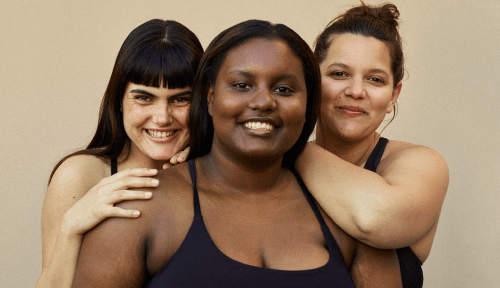It seems that for the conscious consumer, it’s never been a better time to shop. H&M touts its “Conscious” collection (made with pineapple leaves!). Ikea plans to shave 80 percent of its greenhouse gas emissions by 2030. Everlane is turning plastic bottles into jackets. Dasani bottled water is now made with plastic “partially sourced from plants.” On the surface, conscious consumerism makes it easier to have a better social and environmental impact—from carbon footprint to materials sourcing to packaging—as you shop for everything from clothing to kitchenware.
And yet, even sustainable shopping and conscious consumerism won’t pull us out of the climate crisis. “I tend to be somewhat pessimistic about sustainable consumerism as a real solution to our environmental problems,” says professor and sociologist Brayden King, the Max McGraw Chair of Management and the Environment at Northwestern University’s Kellogg School of Management. “The only way that we can actually aggregate consumer choices to make a real dent on our carbon footprint is if nearly everybody makes sustainable consumer choices.”
What conscious consumerism looks like
Part of the challenge, King says, is that consumers are creatures of habit. We might intend to buy the carbon-neutral $70 organic cotton tee, for instance—but it’s hard to resist the $9 tee with free shipping. Most people don’t know where to find sustainable products, or they might not be able to afford them. Even among people who want to buy sustainably produced products, most don’t have the knowledge or time to understand the real environmental impact (think: materials sourcing, packaging, shipping, eventual disposal) of their choices.
“If you make sustainability a status symbol, then you’re narrowing that audience to a select few.” —Brayden King, Northwestern University’s Kellogg School of Management
And then there’s the question of who’s actually buying sustainable products. If consumers aren’t shifting their spending towards these more sustainable brands, it doesn’t help much. A 2019 report by Socially Responsible Marketing shows that for the third straight year, fewer Americans reported participating in a range of “good” behaviors, including buying products and services from socially responsible companies.
Almost always, ethically produced products (justifiably) cost more than the alternatives. This might not be an issue for affluent consumers who can help make sustainability cool—but without widespread availability of affordable, sustainable items, it’s harder for consumers to effect change. “A constrained segment of the market is buying those products,” King says. “If you make sustainability a status symbol, then you’re narrowing that audience to a select few, and then we’ve actually limited the impact it will have on our environment.”
Is conscious consumerism a myth?
Buying sustainable products may feel virtuous, but it doesn’t make much of a dent in the real problem, King says. “The business model is based on getting consumers to keep buying products. And the more they buy, the better, because then the company can grow, and that’s good for shareholder value.” Until that model shifts and reflects the true cost of goods—perhaps by taking environmental costs into actual dollars in the form of a carbon tax—hyperconsumption will continue to have deleterious effects on the planet. “We need to look at ways of reforming the economy,” King says. “We have to incentivize businesses to create carbon-neutral products and services. Until we have options that are not just based on the business model of grow-and-spend, we’re not going to get any real change.”
How to be a conscious consumer
Limit overall shopping
So, sure, sustainable products are environmentally better than their non-sustainable alternatives. Yet here’s what’s better still. Buying nothing, obviously, has the lowest environmental impact of all. (The good ol “Is it a want or a need?” question comes in handy here.)
Consider secondhand options
For items you’ll use once or rarely—think evening dresses and pasta makers—consider borrowing from a friend. Secondhand and vintage shopping, too, can scratch that “something new” itch without gobbling up new resources.
Pivot towards activism
But rather than agonizing over every little purchase you make, consider spending your energy on activism. “Worldwide, we’ve never needed leaders more than we do now who are willing to help the world accept the reality that we’re currently facing,” King says. “If it makes you happy to buy a sustainable T-shirt, go ahead—but individuals need to make sure their voices are heard through their votes.” It’s almost 2020, friends. You all know what to do.
The Green New Deal can sound confusing—here’s a primer. Plus, find out why weather and climate are connected, but different.
Sign Up for Our Daily Newsletter
Get all the latest in wellness, trends, food, fitness, beauty, and more delivered right to your inbox.
Got it, you've been added to our email list.











